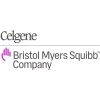
Allogeneic Transplantation in Patients With Cutaneous T-Cell Lymphoma
LymphomaDisorder Related to Bone Marrow TransplantationThe goal of this clinical research study is to see if receiving a transplant of blood stem cells (cells that can produce blood) or bone marrow from either a related donor (brother, sister or other relative) or an unrelated voluntary donor will help patients with advanced cutaneous T-cell lymphoma. The length of time that patients who receive the treatment remain free of disease will also be studied.

The Response Study of Yt90-Zevalin in Patients With Diffuse Large B-cell Lymphoma After 6 Cycles...
Diffuse Large B-cell LymphomaThe purpose of this study is to determine the effective of Yt90-Zevalin therapy in patients with diffuse large B-cell lymphoma that have achieved at least an unconfirmed partial remission after 6 cycles of CHOP therapy.

Efficacy and Safety Study of Fostamatinib Tablets to Treat B-cell Lymphoma
LymphomaPatients: B-cell lymphoma, refractory, diffuse, nodular, mantle, other Phase I : Two groups of 6 patients, escalating dose tolerability- 28 days Phase II: Three groups of 16 patients (nodular, diffuse large cell, mantle cell plus others). Oral bid dosing with highest tolerable dose until toxicity, progression, or withdrawal

The Effect of Rituximab on Mobilization With AMD3100 (Plerixafor) Plus G-CSF in Patients With Relapsed...
Non-Hodgkin LymphomaHodgkin DiseaseParticipants with non-Hodgkin lymphoma (NHL) or Hodgkin disease (HD) will be assigned to one of 2 arms based on the immunophenotype of their lymphoma. (A)Participants with CD20(-) lymphoma will undergo mobilization with granulocyte colony-stimulating factor (G-CSF) and plerixafor. (B) Participants with CD20(+) lymphomas will undergo mobilization with rituximab, G-CSF, and plerixafor. They will receive a weekly dose of rituximab beginning 1 week prior to, and continuing until 2 weeks after, the first dose of G-CSF. Participants in both groups will receive G-CSF twice daily for 4 days. In the evening on Day 4, a dose of plerixafor will be administered. Apheresis will be initiated the next morning. Participants will continue to receive G-CSF twice daily and to receive the evening dose of plerixafor followed by apheresis the next morning for up to a total of 4 aphereses or until ≥5*10^6 CD34+ cells/kg are collected. Participants who are transplanted will be monitored for the time to polymorphonuclear leukocytes (PMN), platelets (PLT), and lymphocyte engraftment. Follow-up assessments will be done at 100 days, and 6 and 12 months post-transplantation.

Velcade Plus ICE for Patients With Relapsed Classical Hodgkin Lymphoma
Hodgkin LymphomaLymphomaPrimary Objectives: To determine the toxicity profile of multiple doses of bortezomib when given with ICE in patients with relapsed and refractory classical Hodgkin lymphoma (HL). To determine the maximum tolerated dose (MTD) of bortezomib when given in combination with ICE chemotherapy in patients with relapsed and refractory classical Hodgkin lymphoma (HL). Secondary Objectives: - To determine the overall response rate and complete response rate in patients with relapsed and refractory classical Hodgkin lymphoma (HL).

A Study of Revlimid in the Treatment of Non-Hodgkin's Lymphoma
LymphomaNon-Hodgkin'sSubjects who qualify will receive oral lenalidomide daily on days 1-21 of every 28 day cycle. Treatment will continue until disease progression, or unacceptable adverse events develop

A Study of ABT-263 in Subjects With Relapsed or Refractory Lymphoid Malignancies
Chronic Lymphoid LeukemiaLymphoid Malignancies4 moreThe Phase 1 portion of the study evaluated the pharmacokinetic profile and safety of ABT-263 with the objective of defining the dose limiting toxicity and maximum tolerated dose in subjects with lymphoid malignancies. The Phase 2a portion of the study is evaluating ABT-263 using a step-up dosing regimen and may be increased to the defined recommended Phase 2 dose to obtain additional safety information and a preliminary assessment of efficacy in subject with lymphoid malignancies. The Extension portion of the study is to allow Phase 2a subjects who remain active 1 year after the last subject enrolls or who have been on study approximately 1 year to continue receiving ABT-263 with less frequent study evaluations. Subjects in the Extension Study will continue receiving study drug for up to 7 years after the last subject transitions to the Extension Study, or until disease progression or toxicity that necessitates discontinuation (whichever comes first).

Gemcitabine Plus Busulfan, Melphalan and Hematopoietic Cell Transplant for Advanced Lymphoid Malignancies...
LeukemiaLymphoma1 moreThe goal of this clinical research study is to find the highest tolerated dose of gemcitabine that can be given with busulfan and melphalan. The safety of this drug combination will also be studied.

Rituximab and GM-CSF in Treating Patients With Newly Diagnosed Follicular B-Cell Lymphoma
LymphomaRATIONALE: Monoclonal antibodies, such as rituximab, can block cancer growth in different ways. Some block the ability of cancer cells to grow and spread. Others find cancer cells and help kill them or carry cancer-killing substances to them. Colony-stimulating factors, such as GM-CSF, may increase the number of immune cells found in bone marrow or peripheral blood. Giving rituximab together with GM-CSF may be an effective treatment for follicular B-cell lymphoma. PURPOSE: This phase II trial is studying the side effects and how well giving rituximab together with GM-CSF works in treating patients with newly diagnosed follicular B-cell lymphoma.

Clofarabine in Treating Patients With T-Cell or Natural Killer-Cell Non-Hodgkin's Lymphoma That...
LeukemiaLymphoma1 moreRATIONALE: Drugs used in chemotherapy, such as clofarabine, work in different ways to stop the growth of cancer cells, either by killing the cells or by stopping them from dividing. PURPOSE: This phase I/II trial is studying the side effects and best dose of clofarabine and to see how well it works in treating patients with T-cell or natural killer-cell lymphoma that has relapsed or not responded to previous treatment.
